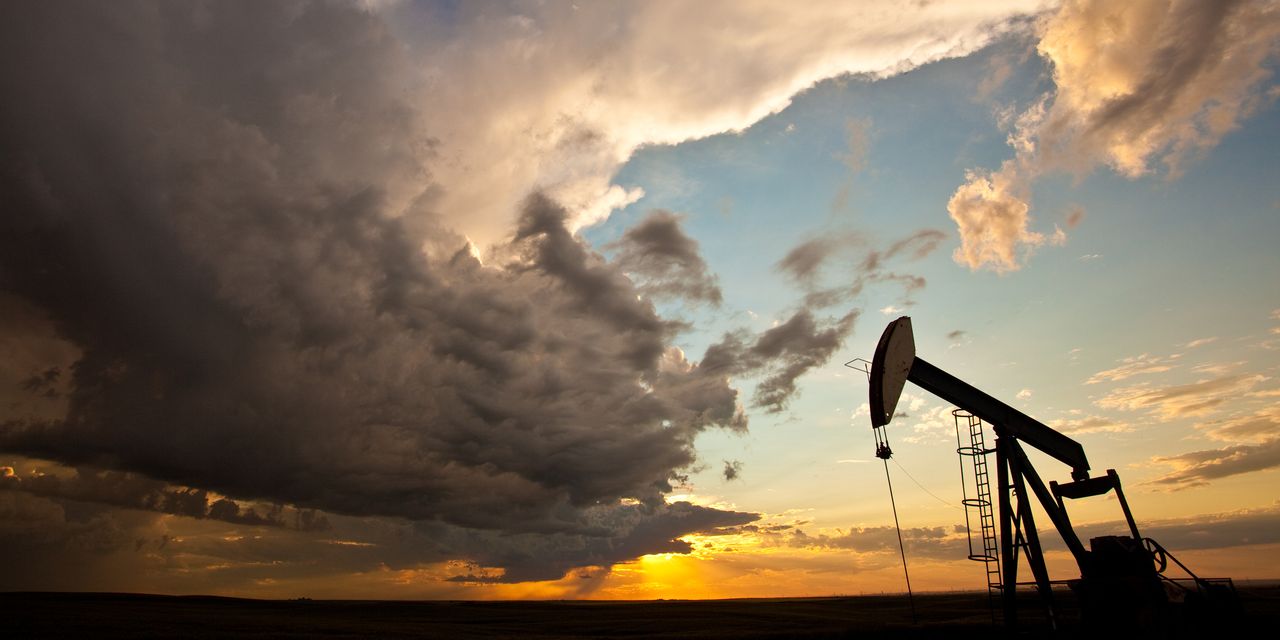Oil futures settled higher on Monday, with prices finding modest support from a short-lived mutiny by Russia’s Wagner Group that raised questions about President Vladimir Putin’s grasp on power and the production outlook for one of the world’s key oil producers.
Price action
-
West Texas Intermediate crude for August delivery
CL00,
-1.08% CL.1,
-1.08% CLQ23,
-1.08%
rose 21 cents, or 0.3%, to settle at $69.37 a barrel on the New York Mercantile Exchange. -
August Brent crude
BRNQ23,
-1.00% ,
the global benchmark, rose 33 cents, or nearly 0.5%, to $74.18 a barrel on ICE Futures Europe. September Brent
BRN00,
-0.94% BRNU23,
-0.94% ,
the most actively traded contract, gained 34 cents, or 0.5%, to $74.35 a barrel. -
Back on Nymex, July gasoline
RBN23,
+0.47%
added 0.8% at 2.54 a gallon, while July heating oil
HON23,
+0.42%
climbed 1.3% to $2.44 a gallon. -
July natural gas
NGN23,
-1.07%
climbed 2.3% to $2.79 per million British thermal units.
Market drivers
The mutiny, led by Wagner Group chief Yevgeny Prigozhin late Friday, saw the mercenary paramilitary force take over Russia’s southern military headquarters in Rostov-on-Don with little resistance, before marching largely unchallenged toward Moscow. Putin, without mentioning him by name, accused Prigozhin of treason.
The fear was that some kind of “brewing civil war might damage Russia’s ability to export oil,” Stewart Glickman, energy equity analyst at CFRA Research, told MarketWatch. That could happen with damage to pipelines or ports where oil is offloaded onto ships, he said.
Read: Russia’s Putin survives short-lived Wagner Group mutiny. Here’s what the means for oil.
The mercenary group’s advance, however, halted a little more than 120 miles from the capital on Saturday before Prigozhin abruptly stood down in a deal that would see him sent to Belarus and charges against him of leading an armed rebellion dropped.
“While the immediate supply risks have disappeared, the market will likely have to start pricing in a larger risk premium for oil given the growing instability in Russia,” Warren Patterson and Ewa Manthey, commodity strategists at ING, said in a Monday note. “How much of a risk premium will really depend on how the aftermath of the failed insurrection is dealt with.”
Read: What’s next for markets after aborted Wagner mutiny leaves Russia’s Putin weakened
Glickman points out that despite threats to cut oil production, Russia has actually done the opposite to “some degree, pumping out more oil so that higher volumes can partially offset the loss of revenue from price caps” set by the European Union.
Saudi Arabia has “shown a willingness in the past to flood the market with oil when it felt that its market share was being eaten away by others,” he said. “If Russia continues to try and expand production in order to combat price caps, it is not impossible to imagine Saudi Aramco resorting to this same tactic once again, even briefly, in order to get better compliance from Russia.”
Taking a look at the bigger picture for oil, meanwhile, the demand side — particularly China’s soft economy appears to be having more of an impact on the larger price trend for oil, said Colin Cieszynski, chief market strategist at SIA Wealth Management. Given that, China manufacturing and non-manufacturing PMI data due later this week may be the “next event of note,” he said.
Read the full article here













